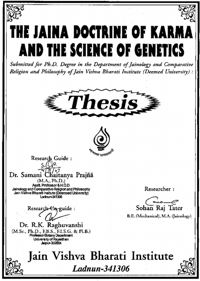Somebody is naturally shy because of his genes, but genes are not the switches that indicate ones qualities. Genes are simply chemicals that direct the combination of more chemicals. The chemicals that make up genes is called deoxyribonucleic acid or DNA. It comprises simple building blocks called bases, of which there are four different varieties A, G, T and C. The bases come together in long strings, and each DNA molecule consists of two of these strings paired according to the rule that A matches T and G matches C. DNA stores information in the order of bases. The DNA sequence 'AGCT' means one thing and the sequence 'TCGA' means something else, as difference in meaning 'taps' and 'spat'.
The information in DNA is converted into proteins, which are made of amino acids. Proteins are where, where there the action is. The most important function of proteins is to act as enzymes that change one chemical into another. For example, it is an enzyme that converts tyrosene, as amino acid found in many foods, into dopamine, a brain chemical that can make you feel active and excited. A different enzyme breaks down the dopamine into smaller molecules and there by leaves you feeling more relaxed or even lazy. Different enzymes make and degrade the more than 300 brain chemicals that influence thinking, acting and feeling.
The brain and body are built by DNA and everyone's DNA is pretty much the same, we have 99.9% the same DNA as michael Jordon, Albert Einstein, Elizabeth Taylor, Charles Manson, Julius Caesar, Julia child and Jules verne. All of them and every one who has ever lived have the same 1.0 lac or so genes, which are organized into the same 23 chromosomes.
But pretty much the same is not exactly the same. There are difference in D.N.A. about 0.1% or one bit out of every 1000. Considering than there are 3 billion chemical based in question, the differences matter, where Michael-Jordon's DNA says "G", Michael Jackson's may say "C" and Andrew Jackson's said "T", while Jack the Ripper's said "A". There are roughly 3 million such differences between individual, and these differences are responsible for all the inherited aspects the variations among people from eye color to height to personality and intelligence. It is hard to believe that such a tiny difference - one tenth of one percent could make such a great difference in how people vary from each other. Many of the 3 million variations do not mean anything as far as we know, so there are even fewer differences that matter.
If we do not believe that 0.1% of DNA could be responsible for so many differences, consider the fact that human DNA differs from chimpanzee DNA by only 1 to 2%; Your DNA and a chimp's at least 98% the same. Yet this seemingly "fine print" of DNA instructions is the reason human can do calculus, compose poetry and build cathedrals, while chimps pick bugs off each other and eat them. Humans have pretty much the same DNA as a chimp because that is where we came from, and the chimp is close to the ape because that is where he came from, and so down the line fish and reptiles and even upto single cell organism such as yeast. This evolutionary conservation has a beneficial side effect: we can often figure out what a human gene does by looking at a similar gene in simpler organisms.
One of the most common misconception about genetics is that there are genes 'for' things. Some people have the genes for breast cancer, shyness, blue eyes so they must have the disease, condition or trait. This is what people tend to think when they hear about a gene 'for' depression, or a 'gay gene" or 'obesity gene". If that were true, it would be easily enough to undergo testing to see what genes you have, and therefore what you ought to worry about. That is not the way it works. Everyone has a "mood gene" and a "sexual orientation gene" and a gene that regulates body weight. The difference is that the genes come in different varieties or flavors.
For example may be the "mood gene" which every one has a receptor that responds to the hormones related under stress. May be the only difference between two people is that one has a gene with T at position 4,356 where as the other person has a C at the same spot. That might be enough to affect the strength of the electrical current flowing through the cells, so the same amount of hormone produces a gentle buzz in one person and a walloping jolt in another. That single detail - 1 letter out of 3 billion - could mean the difference between a mostly cheerful person and one, who is easily depressed. Both people have the same gene, but the fine print makes all the difference. Imagine a room filled with 30,000 books. Here the difference would be the equivalent of a single letter in a single book.[115]
 Prof. Dr. Sohan Raj Tater
Prof. Dr. Sohan Raj Tater
 Doctoral Thesis, JVBU
Doctoral Thesis, JVBU